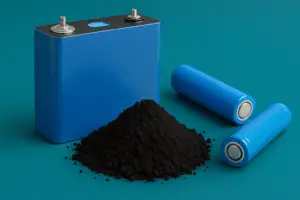Aqueous and organic electrolytes in batteries refer to the medium in which ions move from one electrode to another. The key difference between these two types of electrolytes is the solvent used.
Organic Electrolytes
These are electrolytes where the solvent is an organic compound, such as ethylene carbonate or diethyl carbonate. They are typically used in lithium-ion batteries. The advantage of organic electrolytes is that they are more stable to electrolytic decomposition and can operate at much higher voltages than aqueous electrolytes, allowing for higher energy densities in their batteries.
Suppose a lithium-ion battery is overcharged, overheated, physically damaged, or short-circuited. In that case, it can rapidly increase temperature and pressure inside the battery, potentially resulting in a fire or explosion, by a process known as thermal runaway.
Sodium-ion batteries, much like lithium-ion batteries, can potentially enter a state of thermal runaway under certain extreme conditions or from certain external forces. In the case of sodium-ion batteries, the organic electrolytes often used in these batteries can decompose under high heat, potentially leading to the release of flammable gases and further increase in temperature. However, it’s important to note that the onset temperature for thermal runaway in sodium-ion batteries might be different from that in lithium-ion batteries due to the differences in the materials used.
Aqueous Electrolytes
These are electrolytes where the solvent is water. The advantage of aqueous electrolytes is that they are generally safer and can conduct ions very efficiently. One disadvantage of aqueous electrolytes is that water is more prone to electrolytic decomposition than organic solvents, limiting the voltage window. Water has a voltage stability window of 1.23V at room temperature, due to the thermodynamic stability of water, beyond which it will decompose. However, when salts or other additives are added to make an aqueous electrolyte, the voltage stability window of the water can be significantly expanded, with reports of >3.2V or higher. This phenomenon has enabled commercialized aqueous batteries to operate at voltages well above the thermodynamic stability window of 1.23V for water, with some examples being alkaline or zinc AA batteries (1.5V), nickel-hydrogen (1.55V) and lead acid (2.1V).
Despite these issues, the fact that aqueous electrolytes are non-flammable, much less toxic, and generally less reactive than organic electrolytes means that they are often considered safer, especially in terms of risks related to fire and thermal runaway.
Each type of electrolyte has its pros and cons, and the choice of electrolyte can significantly influence a battery’s properties, including its energy density, power density, safety, lifespan, and operational temperature range. Therefore, much research is focused on developing new electrolytes that can offer the best combination of these properties for various applications.



